Assuming I have a dataframe similar to the below, how would I get the correlation between 2 specific columns and then group by the 'ID' column? I believe the Pandas 'corr' method finds the correlation between all columns. If possible I would also like to know how I could find the 'groupby' correlation using the .agg function (i.e. np.correlate).
What I have:
ID Val1 Val2 OtherData OtherData
A 5 4 x x
A 4 5 x x
A 6 6 x x
B 4 1 x x
B 8 2 x x
B 7 9 x x
C 4 8 x x
C 5 5 x x
C 2 1 x x
What I need:
ID Correlation_Val1_Val2
A 0.12
B 0.22
C 0.05

